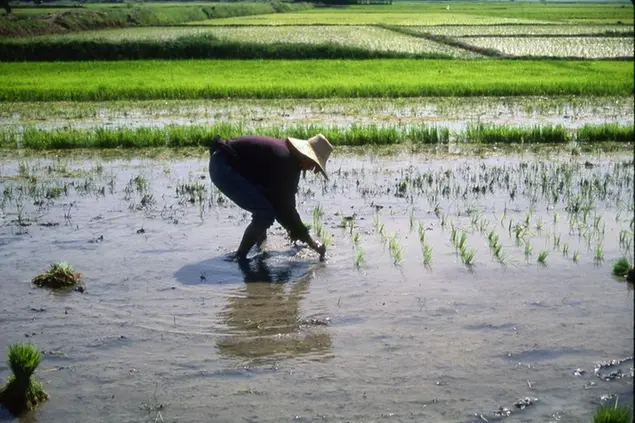PHOTO
The Philippine Statistics Authority (PSA) is updating its parameters on the rice value chain, particularly the milling recovery rate of palay, to improve the government's statistics and decision-making in the sector.
The PSA said it conducted a focus group discussion (FGD) with various rice industry stakeholders, from academe to industry players, about updating its statistical parameters related to rice.
'The PSA gathered experts from the rice industry from both the government and private sector to solicit inputs and vital information that are useful in the validation of the current parameters used in the compilation of the supply utilization accounts (SUA),' the data agency said.
According to the PSA, the SUA is a comprehensive statistical framework for the physical accounting of agriculture and fishery commodities produced in the country.
Policymakers use the SUA in crafting programs and projects in the agriculture sector as it involves the country's total supply of commodity, losses and wastage, production and imports, among others, in a given period.
The PSA said the FGD recommendations, field visits and critical information interviews would be inputs in its upcoming updated SUA parameters.
The results would be presented to the Technical Working Group on Crops Statistics, the Interagency Committee on Agriculture and Fishery Statistics, and finally, to the PSA board for approval and adoption.
'This activity is in line with the PSA's commitment for continuous improvement in the production of statistics and indicators on agriculture and fisheries for food security planning and policy formulation in the sector,' it said.
'Likewise, the PSA acknowledges the importance of strengthening its linkages with its stakeholders that are involved in the improvement of the Philippine rice industry,' it added.
The PSA said the participants in the FGD were the University of the Philippines-Los Banos Agricultural Machinery Testing and Evaluation Center, Bureau of Plant Industry, Philippine Council for Agriculture and Fisheries, Department of Agriculture, International Rice Research Institute, National Irrigation Administration, National Food Authority, Philippine Rice Research Institute, Philippine Statistical Association Inc. and Philippine Rice Industry Stakeholders Movement.
Industry sources said that having updated parameters in the rice value chain is necessary to ensure that the government considers the latest on-the-ground data in its policy-making.
Raul Montemayor of the Federation of Free Farmers said that a one percent variance in palay milling recovery rate could translate to 200,000 metric tons (MT) of rice, which is already equivalent to about six days of consumption.
That variance, sources said, could mean whether or not the government would need to import more rice stocks.
'There are many factors affecting the recovery rate - palay variety, moisture content, purity and the milling equipment used,' Montemayor said.
'I am not sure if PSA wants to derive a single uniform milling recovery rate for the whole country or different rates for each area,' he added.
Currently, the PSA uses a 65.4 percent milling recovery rate for palay, meaning that 654 grams of rice is produced out of one kilogram of palay.
Industry players have pointed out that such a milling recovery rate is no longer realistic since many milling facilities in the country are already old.
'A recovery rate of 65 percent for well-milled rice can be achieved only with modern machines. The actual rate is probably lower given that many millers still use old machines,' Montemayor said.
'So the estimates of rice supply coming from local palay production could be overstated, maybe by two to four percent,' he added.
Copyright © 2022 PhilSTAR Daily, Inc Provided by SyndiGate Media Inc. (Syndigate.info).
